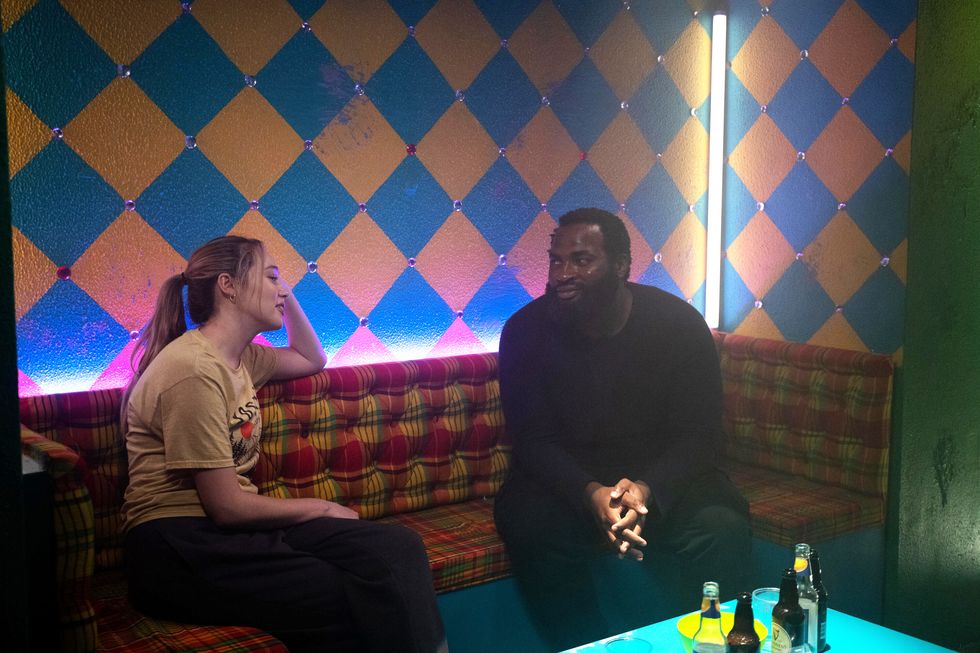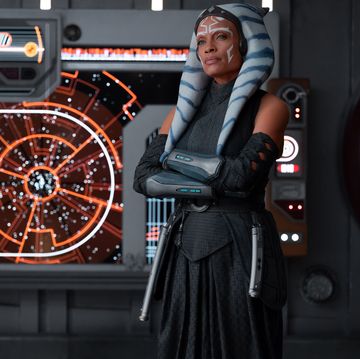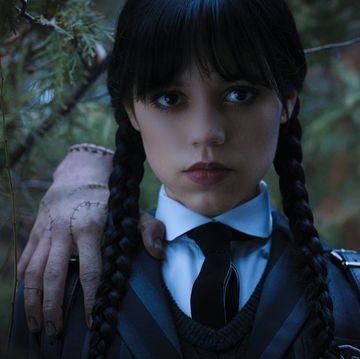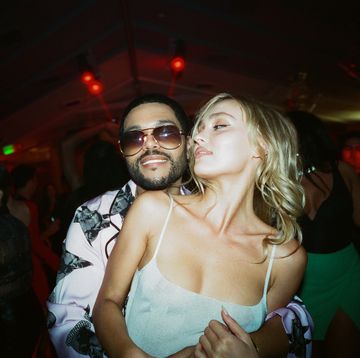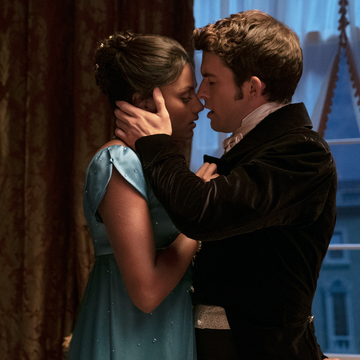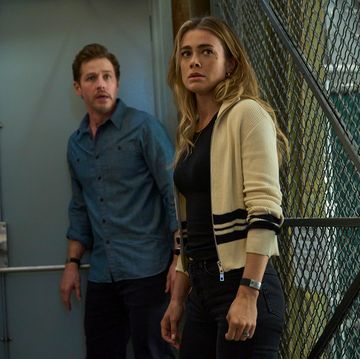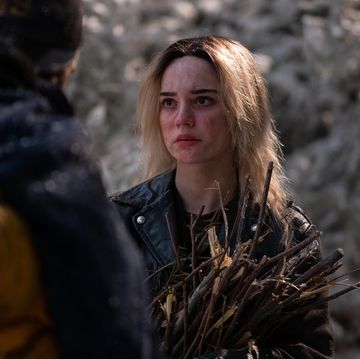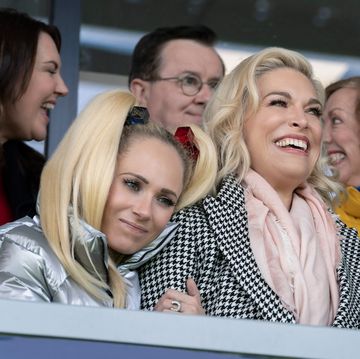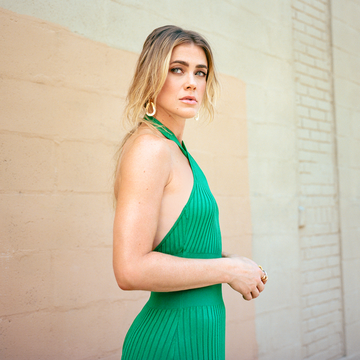Spoilers below.
Alycia Debnam-Carey has had a rough go of it over the last decade onscreen. First, she was murdered mere seconds after finally consummating her relationship with the girl she loved; after that, she spent years navigating a post-apocalyptic, zombie-riddled version of Los Angeles. Most recently, as if all that wasn’t enough, she’s been investigating her older sister’s mysterious death 20 ago by trying to befriend one of the men suspected of killing her.
I’m referring, of course, to Debnam-Carey’s most prominent acting roles: as Lexa on The 100, Alicia on Fear the Walking Dead, and now Emily on Hulu’s series adaptation of the Alexis Schaitkin novel Saint X. When Claire Emily Thomas was just 8, her older sister Alison was found dead during a family vacation on the unspecified Caribbean island of Saint X. Everyone is certain she was murdered by Clive and Edwin, two local boys who work at the resort where the Thomas family was staying, but no one is ever arrested, and the case officially goes unsolved. Nearly two decades later, Emily—now a 25-year-old Brooklyn resident going by her middle name—coincidentally gets into a yellow taxi driven by Clive (Josh Bonzie), sparking in her an obsession with getting to the bottom of what really happened to her sister all those years ago. The eight-part limited series culminates in last week’s finale episode, which sees Emily finally learn the truth about Alison’s death on the island.
More From ELLE

Fortunately for Debnam-Carey, Emily’s trauma-filled life story bears little resemblance to her own. But that didn’t stop her from diving fully into the role. Here, Debnam-Carey discusses filming in New York, inhabiting Emily’s skin, and exploring the ripple effects of America’s obsession with true crime.
Did you read the book when it came out or while you were preparing for the role? What is your familiarity with the source material?
I actually made the choice to just focus on the scripts first. I found out that there were quite a few differences from the book, especially for Emily, and so I just thought it was better for me to focus entirely on the character’s arc with the script, and making sure that I was getting that really airtight for Emily’s journey. But I read the book when we finished, and it was really interesting to then see how it had played out for us when we were filming.
There are so many different timelines in the show. How much exposure did you have to what was happening in the other timelines that you weren’t a part of filming, and how did that affect how you approached Emily’s story?
I read the entirety of all the scripts in one sitting, so I was across the full story-past, present, the whole deal. Then I had compiled all of Emily’s sort of story together to make it a little bit more of a fluid continuum of where her mindset is, where her character arc is flowing, just so it becomes a little bit more consistent—I think that helps me on just a preparation level—so that it feels like a continuum that I’m reading and pitching as an arc in its entirety. Because as far as Emily as a character goes, she’s drawn to Clive with two very different narratives in her head: She has the memory of Clive being this really friendly and good, comforting person, versus then as an adult having this entirely different narrative that has been also exploited by the media. I often feel like it’s a bit of a fractured personality, in that she’s had this arrested development as a child because of this trauma that she experienced at such a young age. Especially when she’s getting to know Clive, it’s like those two pieces of her personality are vying for power in a way.
A huge theme of Saint X is this deconstruction of the true crime industrial complex, and more specifically, the narrative of the dead white girl—especially in light of the way that true crime has become a bigger and bigger cultural force over the last few decades.
Yeah, I mean, I think that’s what was really intriguing about this project and this book. It confronts really uncomfortable aspects of this true crime genre, and also fetishization of the dead white girl trope in the media—and then all the other aspects that aren’t often really talked about, like how race and racial bias and inequality factor in. When this happens to a “destination” community, it decimates that area’s economy, and the economy is so deeply rooted in resorts and colonization. While Saint X is fiction, I think it does serve to try and address some of those themes, and it does try and shine a light on the aspects that are often ignored in these kinds of stories.
Both the book and the movie also explore the tension of what it means to be a “good” white person in that sort of colonized environment, and how easy it is to abandon that point of view in favor of what is comforting and familiar.
And it’s pervasive in every timeline, too. I often thought of how interesting it is that Emily finds herself in this Caribbean neighborhood and is part of this gentrification, even though she’s probably convinced that she’s a “good gentrifier” of some kind.
Do you think Emily relocating to the Caribbean neighborhood is a coincidence or a deliberate choice on her part?
I don’t think it’s coincidence by any means at all. I think it’s inherently part of trauma response. It’s a non-fully realized manifestation of her trauma. It goes back to this idea of this fractured person: I think so many ways she tried to become a version of her sister and embrace that adventurous or provocative spirit—which, when we meet Claire/Emily, is not inherently who she is. And I think she tries to almost flirt with that danger or intensity, and she picks at the wound to try and make sense of it.
Which is how people typically react to trauma when it’s not healed and they don’t have professional help. You pick at the wound because you’re trying to make it play out differently and trying to subconsciously fix the story of what happened, but you’re not really doing it consciously, and so you’re just exposing yourself to reliving it.
And you’re in a loop cycle.
Especially with Emily, who, like you said, has tried to become Alison in a way as she grew up. It’s almost as if she can take Alison into the future by remaking herself at least partly in Alison’s image.
Absolutely. And for her parents, too—I think there’s an interesting aspect of the parent dynamic for each child, and the way the parents view Emily through a hybrid lens of this Alison/Claire mix. Suddenly, Alison was the perfect daughter, and Emily will never be able to live up to that. So she puts on the mask of this Alison, to appease her parents, to appease this vacuum that’s been left, to try and appease then this version of herself that doesn’t feel worthy to still be standing when her sister isn’t.
I think also it’s just a really interesting exploration of a type of grief that we don’t get to see often. We see grief over the loss of a partner, we see grief over the loss of a child or a parent, but those aren’t the only types of grief that there are. I feel like that gets overlooked really easily and is certainly not often used as narrative fodder.
Yeah, I agree. That’s another thing that intrigues me about this role: that it’s not a common narrative of grief that we often see, the loss of a sibling and the focus on the sibling that’s left behind.
Did you have a favorite scene to film, or a favorite coworker to work with?
There was one scene in particular where Clive and Emily are looking out over the New York City skyline, and it was really just such a pinch me moment. I just was like, “Oh, this is so special.” And it was emotional for me, because I grew up in Australia. I came from the other side of the world, and [New York] always seemed so big and huge, and wow, then to actually be there, it was a really cool moment for me. I really just liked working in New York in general. It’s unbelievably manic. You cannot control anything. But I think that was really fun for me. And then a lot of my scenes were working with Josh Bonzie, and he’s just such a generous and wonderful and lovely actor and human. I think both of us really had each other’s back in trying to make sure our dynamic felt grounded, and it felt very nuanced and interesting because we often think about this sort of invisible thread that the two of them are bound by. There’s this pull, and they’re constantly energetically connected by this event that they both experienced.
And that they both were traumatized by.
Yeah, absolutely.
This interview has been edited and condensed for clarity.

Keely Weiss is a writer and filmmaker. She has lived in Los Angeles, New York, and Virginia and has a cat named after Perry Mason.


